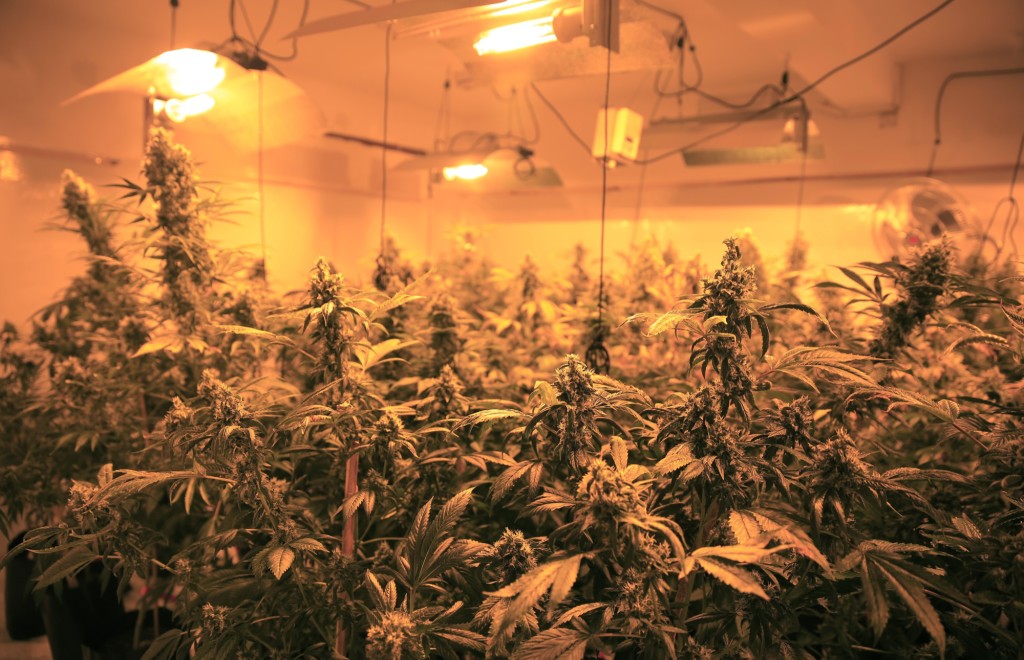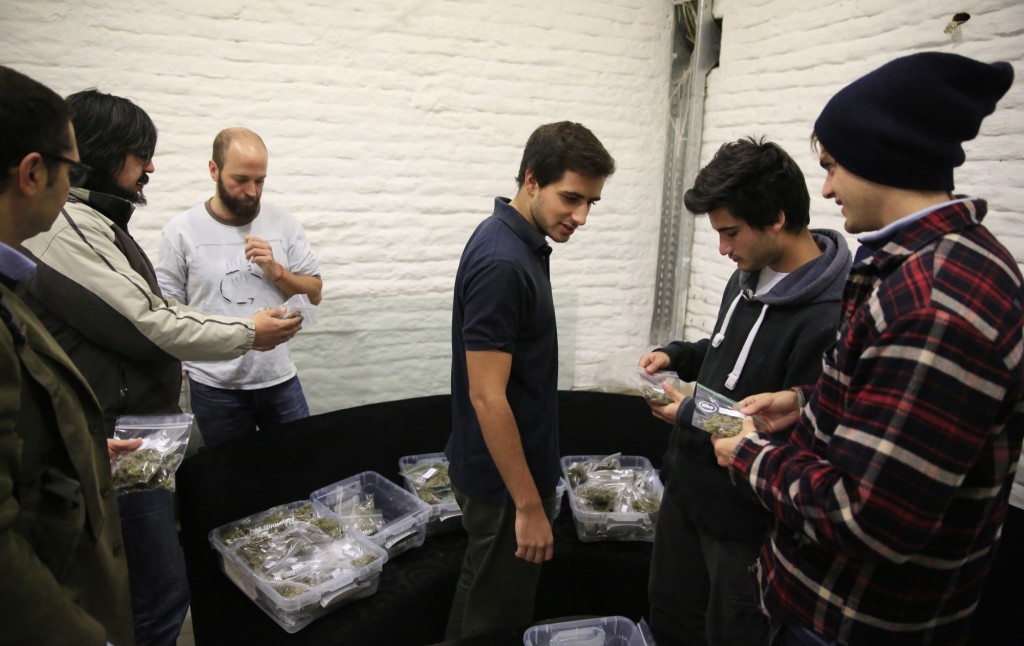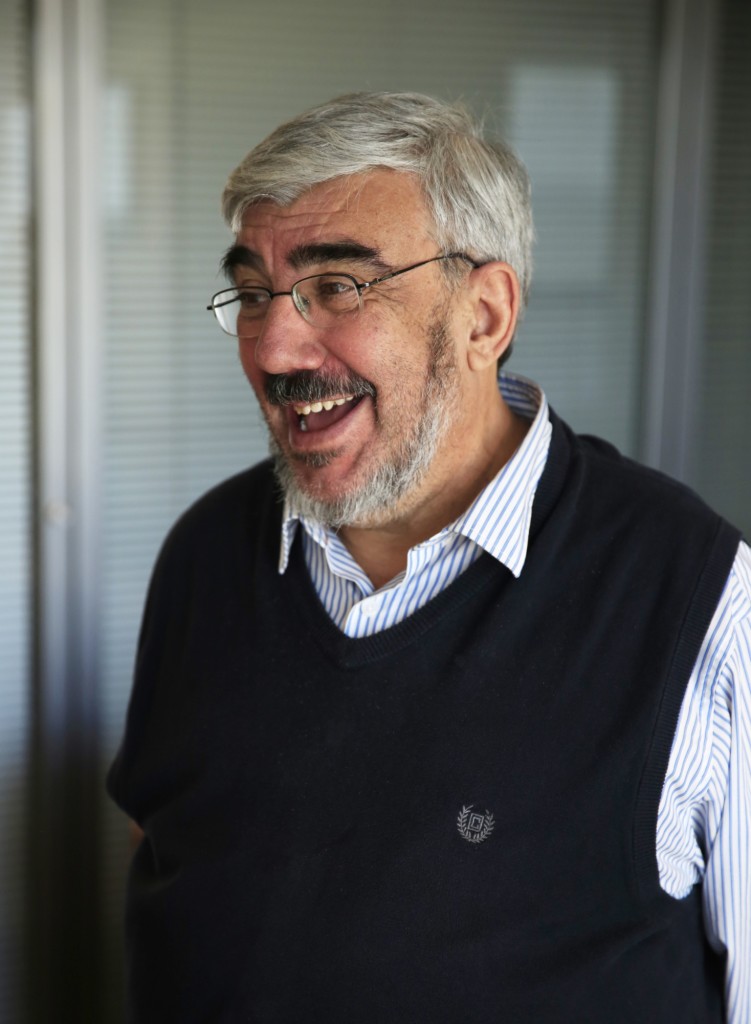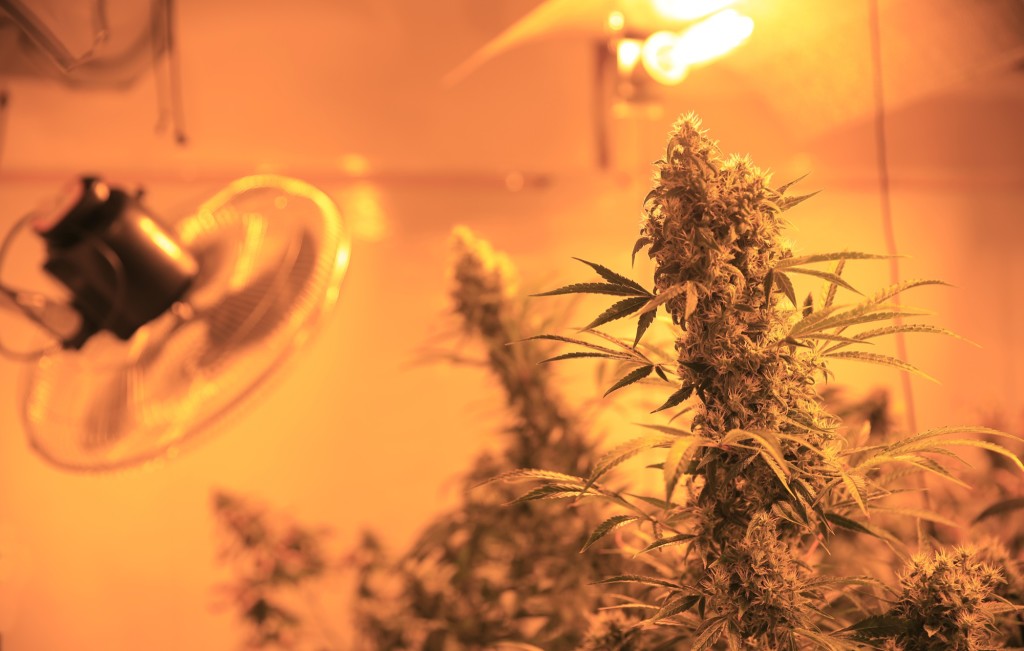
The 420 Cannabis Club’s growing room. (Photo by Frederick Bernas)
 The South American country became the first ever to legalize the sale of marijuana in May 2014 but regulatory bodies, police and pharmacies have yet to catch up with home growers and their steady clientele
The South American country became the first ever to legalize the sale of marijuana in May 2014 but regulatory bodies, police and pharmacies have yet to catch up with home growers and their steady clientele
By Frederick Bernas and Camille Lavoix in Montevideo
In the back room of a store in the Uruguayan capital, connoisseurs pore over boxes of Ziploc bags containing seven varieties of marijuana, with names like “amnesia,” “chocolope”, “tangie” and “sour power”.
The stash belongs to members of the 420 Cannabis Club, who are collecting their monthly allowance of 40 grams, while the next harvest basks in the orange glow of sun lamps in a ventilated room upstairs.
“It gives me peace of mind being part of a club,” said María Aguirre, 40, as she picked eight bags of 10 grams each – four for her and four for her husband. She said street dealers sometimes try to make their customers take samples of cocaine, trying to get them hooked on more “dangerous and addictive” drugs.
In May 2014, then-president José Mujica signed groundbreaking regulations for Uruguay’s marijuana market, making the South American nation the first country in the world to legalize sales of the drug.
The measures – passed by the country’s senate in December 2013 – allowed marijuana users to access in three ways: by growing it at home, or buying it from pharmacies or collective “grow clubs” like the 420.
But more than a year after the world’s most far-reaching marijuana reform was signed into law, the government body supposed to control the legal market is underfunded and understaffed, while police continue harassing growers and the pharmacy plan has barely advanced beyond the drawing board.

Members of the 420 Cannabis Club collect their monthly allowance. (Photo by Frederick Bernas)
“At the moment, this is neither legal nor illegal,” said Marco Algorta, the 420 Club’s head gardener, checking a list of how much weed each member had taken. He is navigating a complex verification procedure overseen by the cannabis regulation and control institute, IRCCA – the state organ set up to manage marijuana use and monitor clubs.
“The state is really slow,” admitted Milton Romani, director of the Uruguayan National Drugs Council. “It’s a big headache – and the cannabis smokers are also pretty useless,” he chuckled.

Milton Romani. (Photo by FB)
The IRCCA currently employs only six civil servants, who are struggling to keep up with a wave of around 20 clubs that want to register for inspection. Just one has been fully approved so far. As the institute was created in an election year, it does not yet have its own budget, and must wait for 2016 spending plans to become fully functional.
The institute is also responsible for maintaining a secure database of cannabis growers. Despite assurances of privacy, the scheme has caused controversy over how the information could be used. About 3,000 people have registered so far, but many are reluctant – especially after comments by President Tabaré Vázquez who hinted in a campaign speech last year that the system could be used to “rehabilitate” drug users.
“It’s like you’ll be registered as a drug addict with the state,” said Pablo, 25, a native of Shangrilá – a coastal town about 20km from Montevideo – who does not intend to sign up. “I see many problems but only one benefit: if someone steals your plants, you can go to the police.”
But the police have also been a source of problems for marijuana growers. Tales abound of officers confiscating plants, despite the 2013 legislation.
In November, Marcos Berneda’s crop was seized from his home in Bella Unión, a town on Uruguay’s northern border. Although he is a registered user – and so permitted to cultivate up to six flowering plants – Berneda says he was detained for several hours after the raid, and forced to wait two more weeks to recover his property.
“It was an operational confusion,” explained Berneda, 33, who believes a neighbor had complained to the police. “The issue is lack of information – there is still a lot of ignorance about marijuana.” The National Drugs Council is designing a program of workshops to educate police, prosecutors and judges about the regularization law.
It was championed by former president José “Pepe” Mujica, who argued that greater state control of the drugs market would damage trafficking networks and reduce health risks by introducing higher quality cannabis. Many consumers acknowledge the street trade in low-grade weed has dropped, but a promised information campaign about the dangers of smoking is yet to materialize.
When sale is rolled out in pharmacies, leaflets will be distributed with every purchase – at a price of about a dollar per gram. But this last and most revolutionary step is also the furthest behind in terms of implementation.

The grow room at Club 420. (Photo by Frederick Bernas)
A government tender for companies to supply pharmacies on a grand scale is in its final stages. Five firms will be selected, and authorities cautiously predict that sales could begin by Christmas.
Nonetheless, skepticism remains among some smokers. “I’ve never gone to a pharmacy to have fun,” said Juan Guano, a partner at the UruGrow store in Montevideo. “The idea sounds crazy to me. It’s just out of place, like selling tobacco in pharmacies.”
But Romani says it would be “unreasonable to only enable home growers and clubs”, as that would exclude 80% of an estimated 160,000 users in Uruguay – where smoking weed has been legal since 1974.
“Cannabis for everyone, or nobody!” he said.
Published @ The Guardian, 13/7/15 – click here for original.





